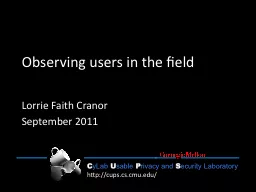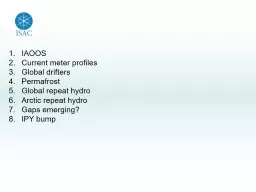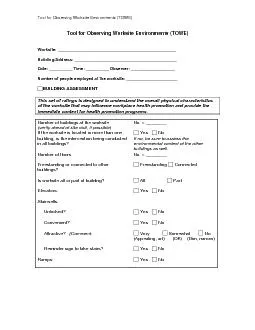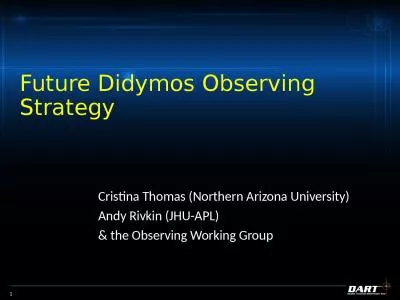PPT-Observing users in
Author : marina-yarberry | Published Date : 2016-09-11
the field Lorrie Faith Cranor September 2011 Why observe users in the field Example of Design Failure BART ChargeaTicket Machines allow riders to buy BART tickets
Presentation Embed Code
Download Presentation
Download Presentation The PPT/PDF document "Observing users in" is the property of its rightful owner. Permission is granted to download and print the materials on this website for personal, non-commercial use only, and to display it on your personal computer provided you do not modify the materials and that you retain all copyright notices contained in the materials. By downloading content from our website, you accept the terms of this agreement.
Observing users in: Transcript
Download Rules Of Document
"Observing users in"The content belongs to its owner. You may download and print it for personal use, without modification, and keep all copyright notices. By downloading, you agree to these terms.
Related Documents














